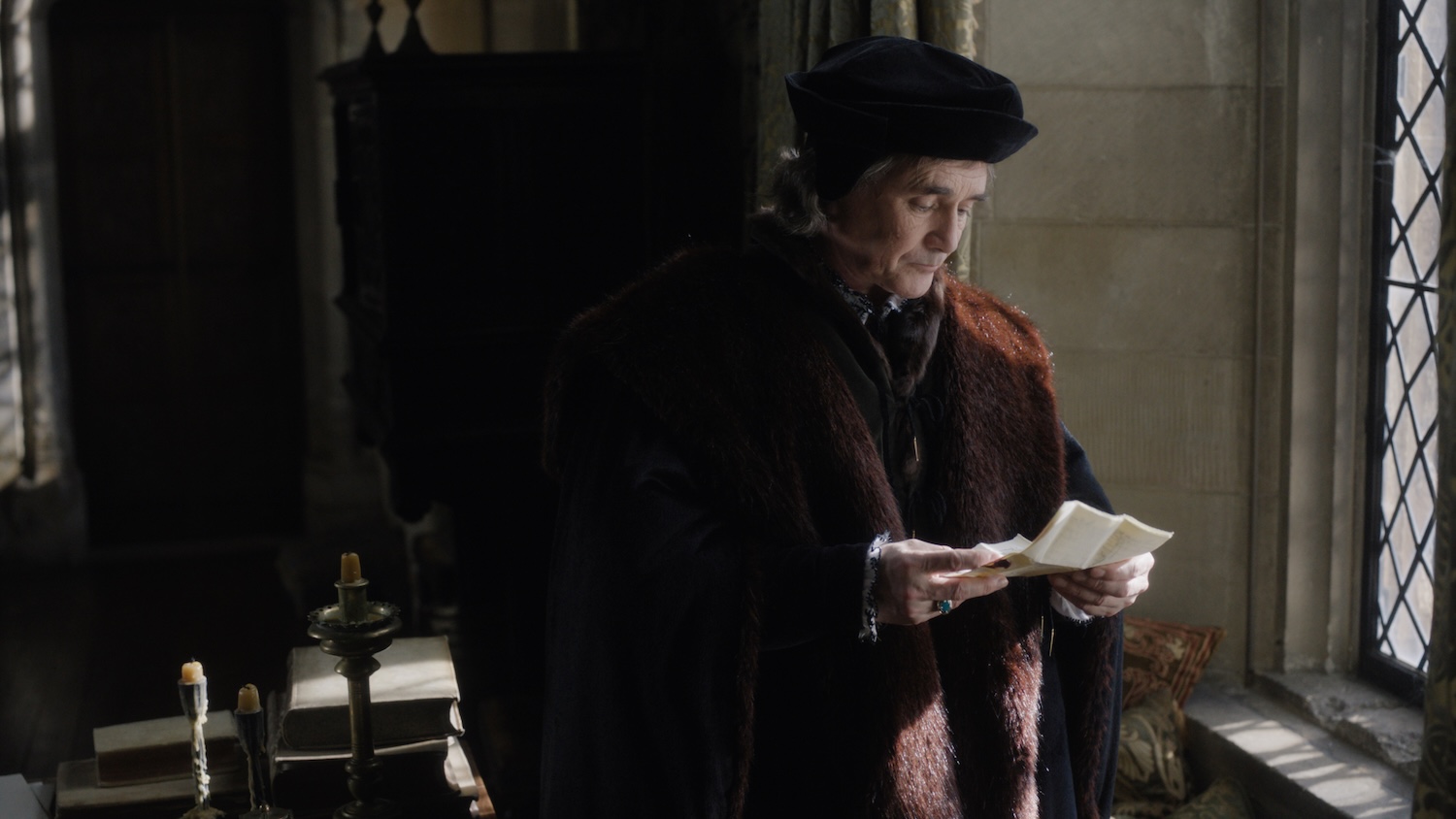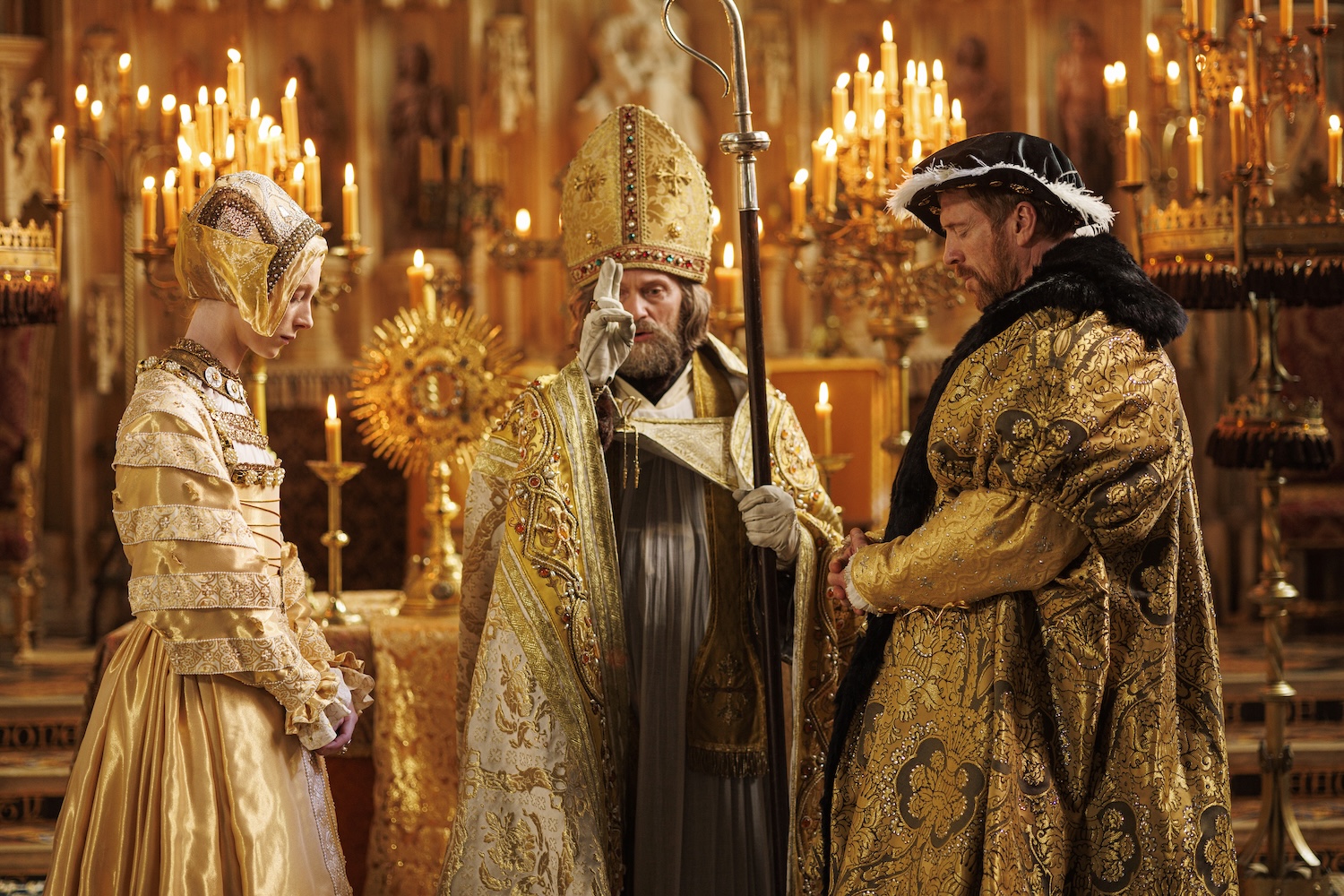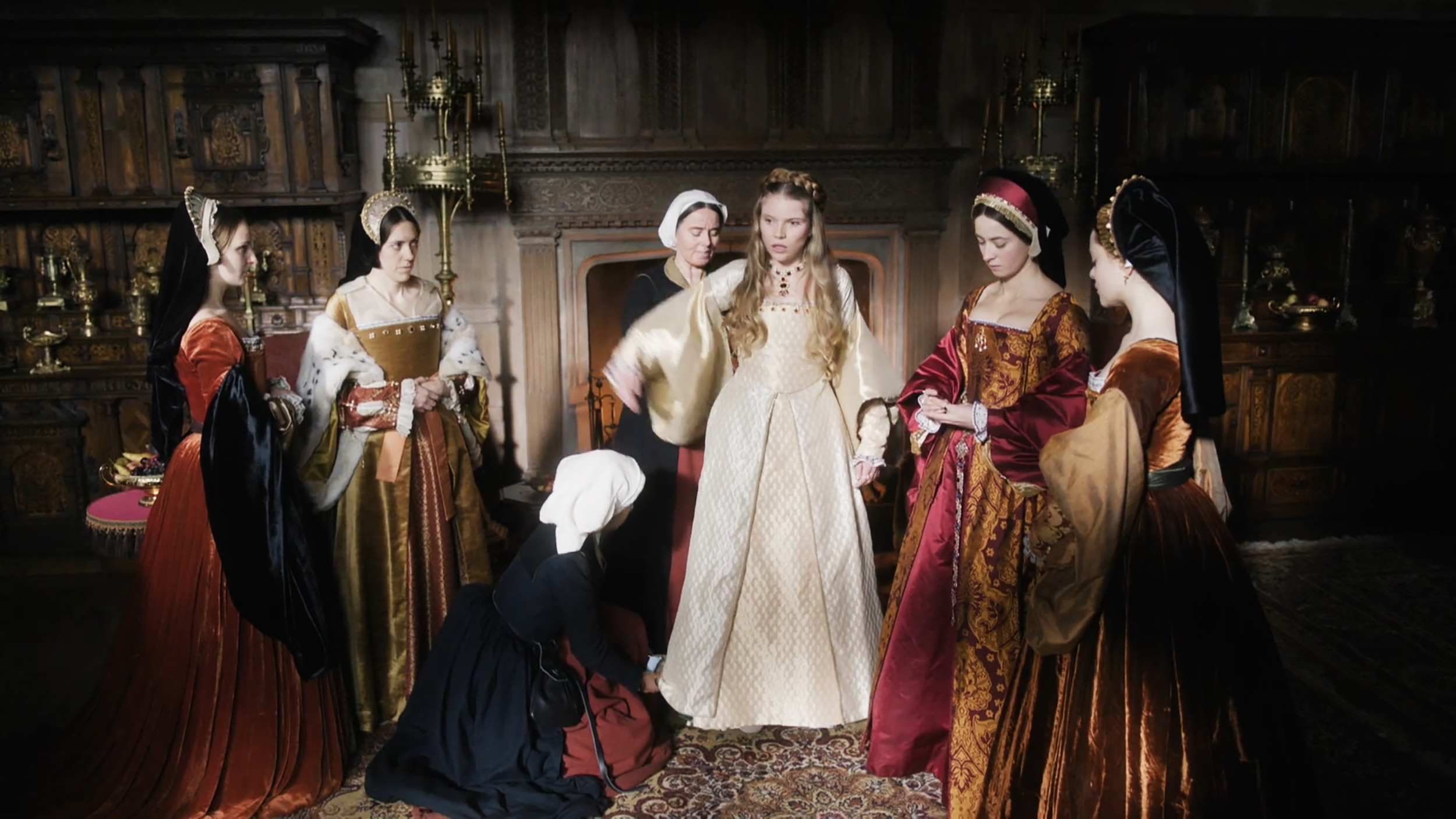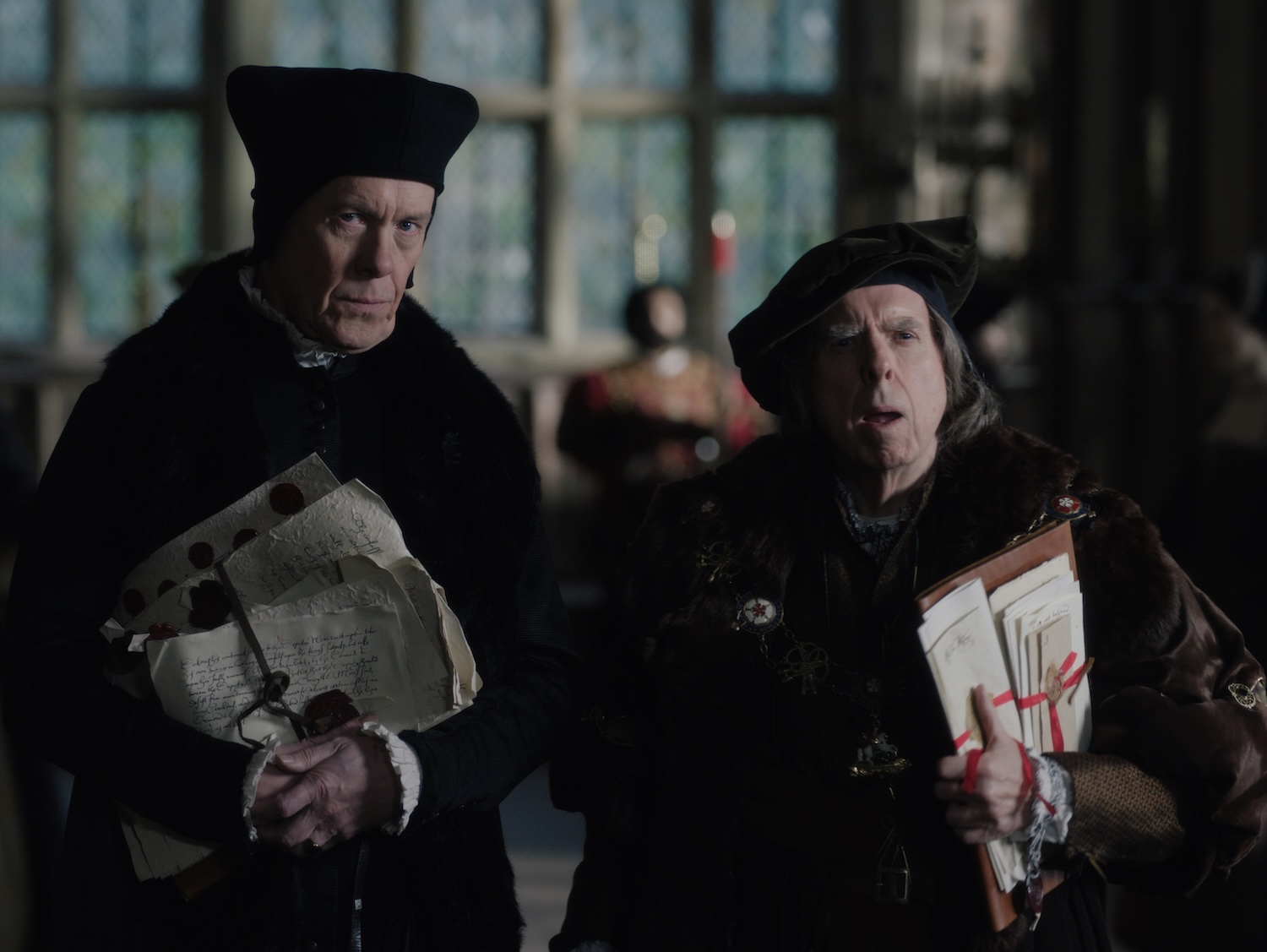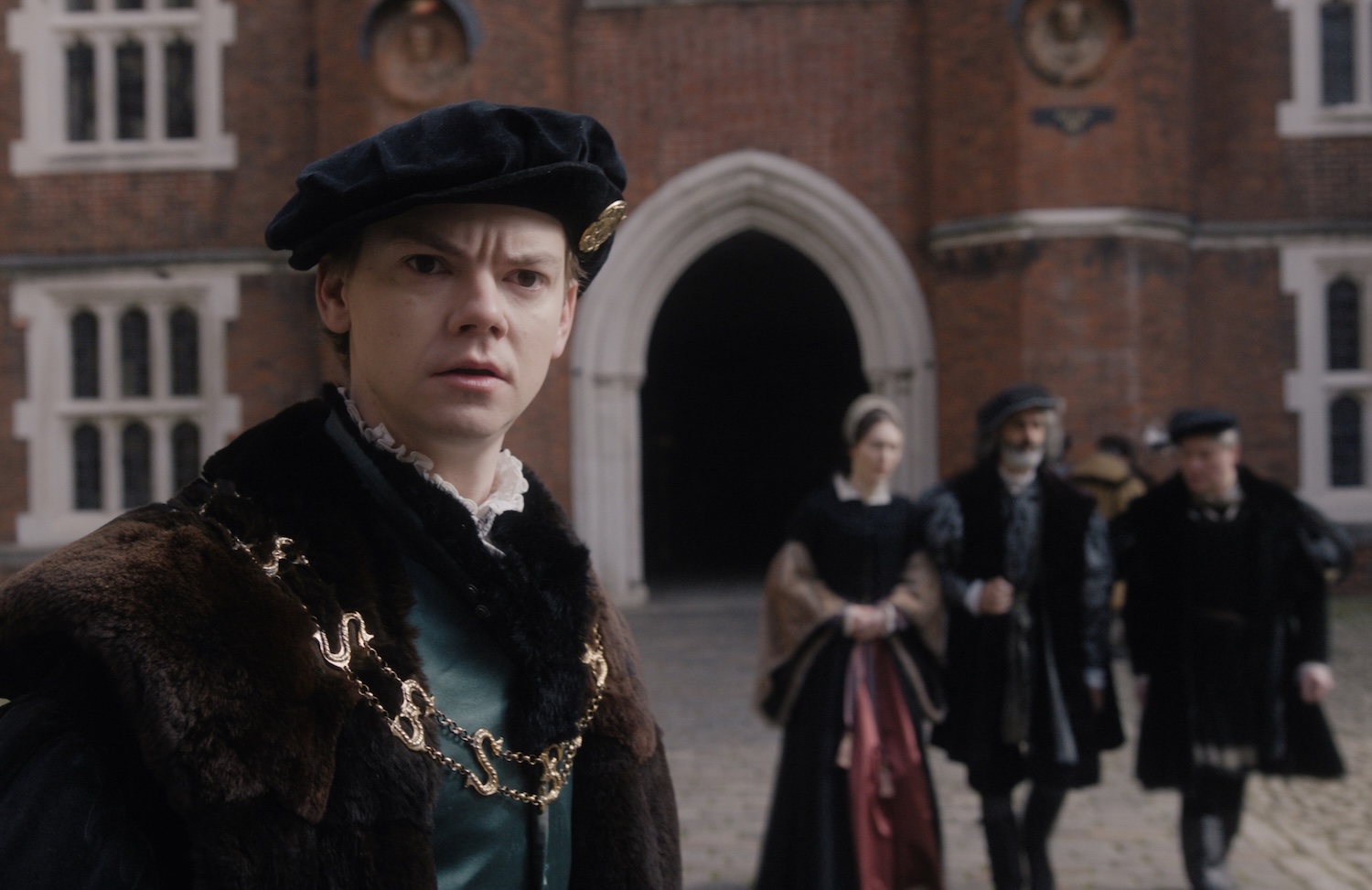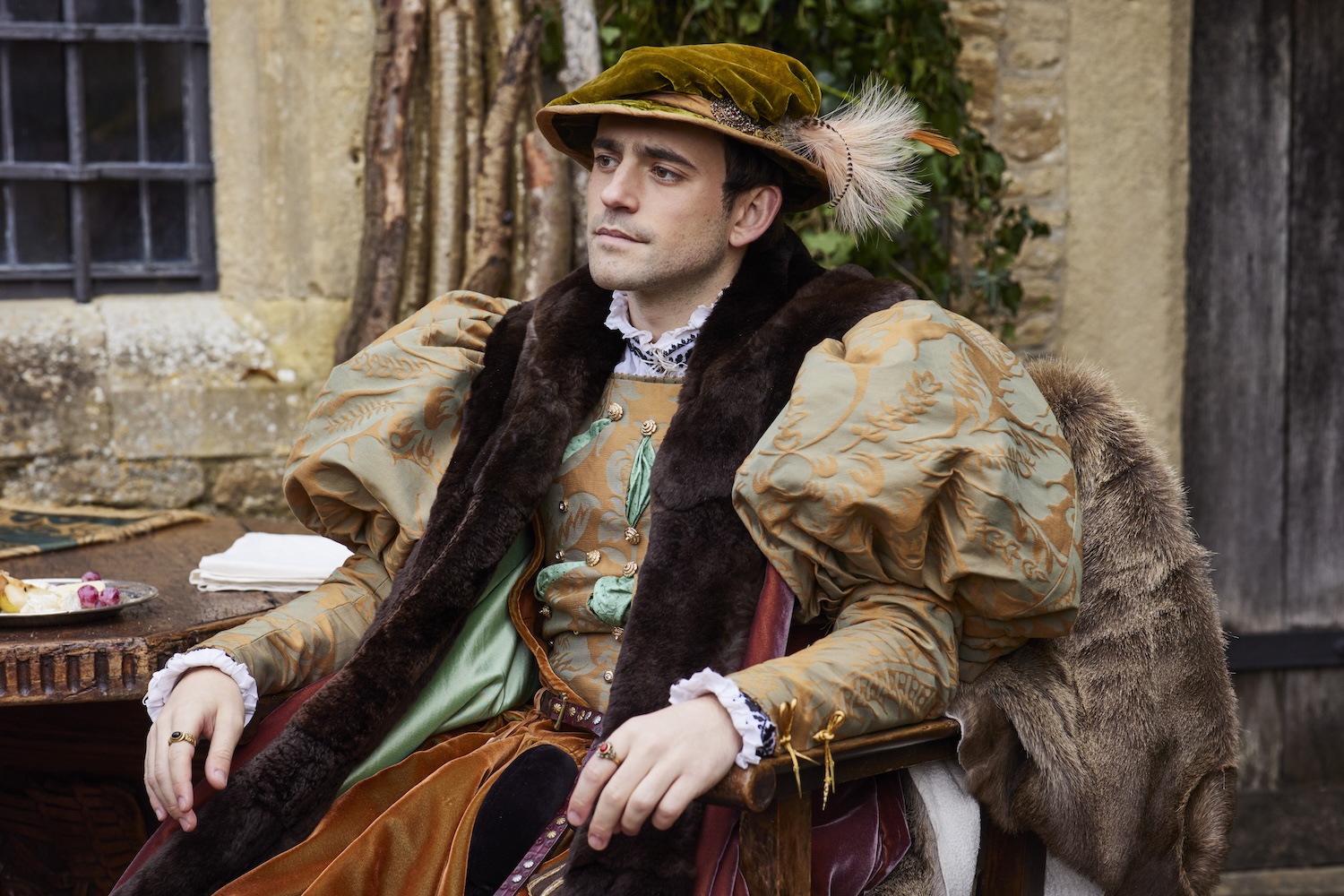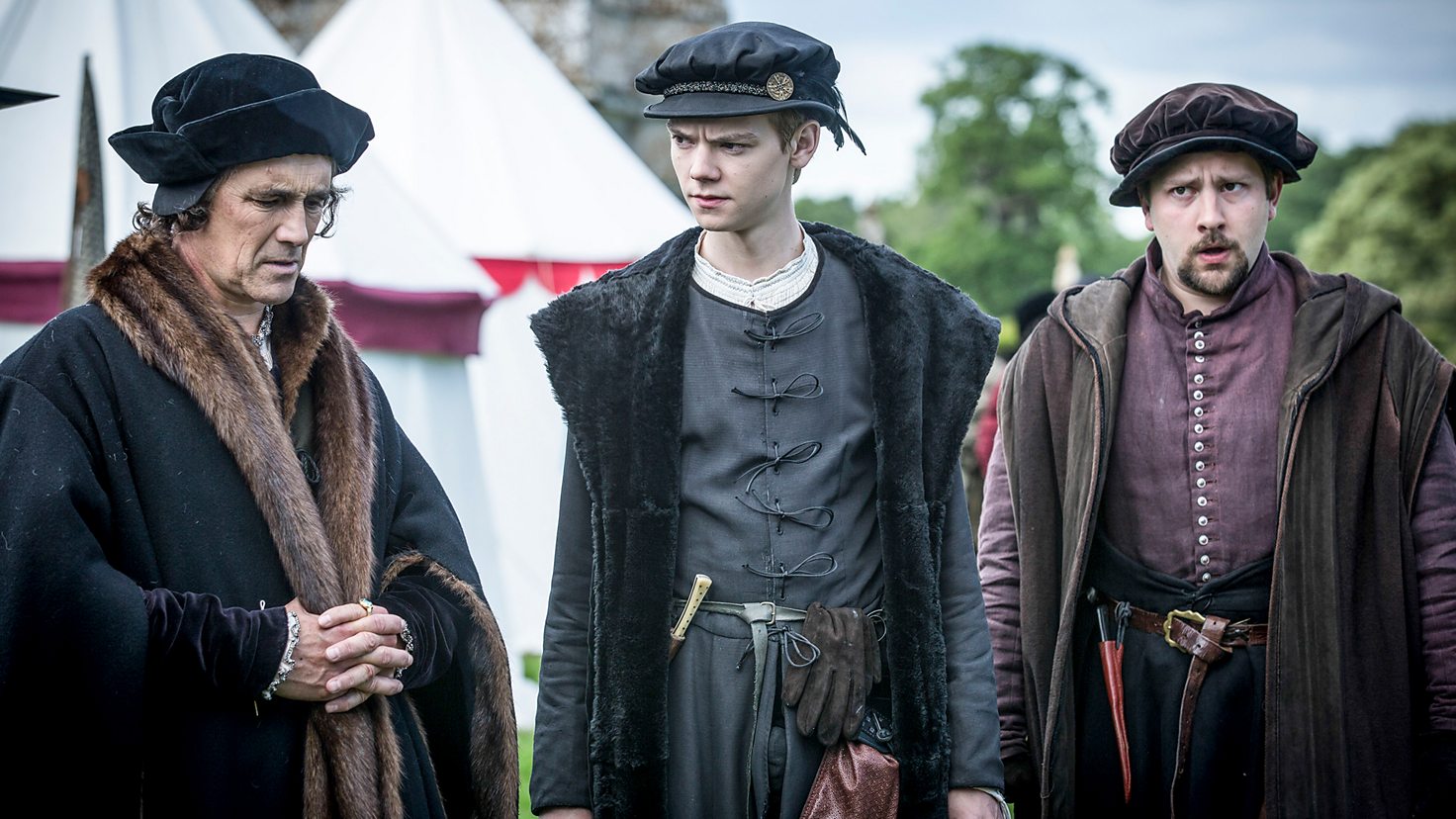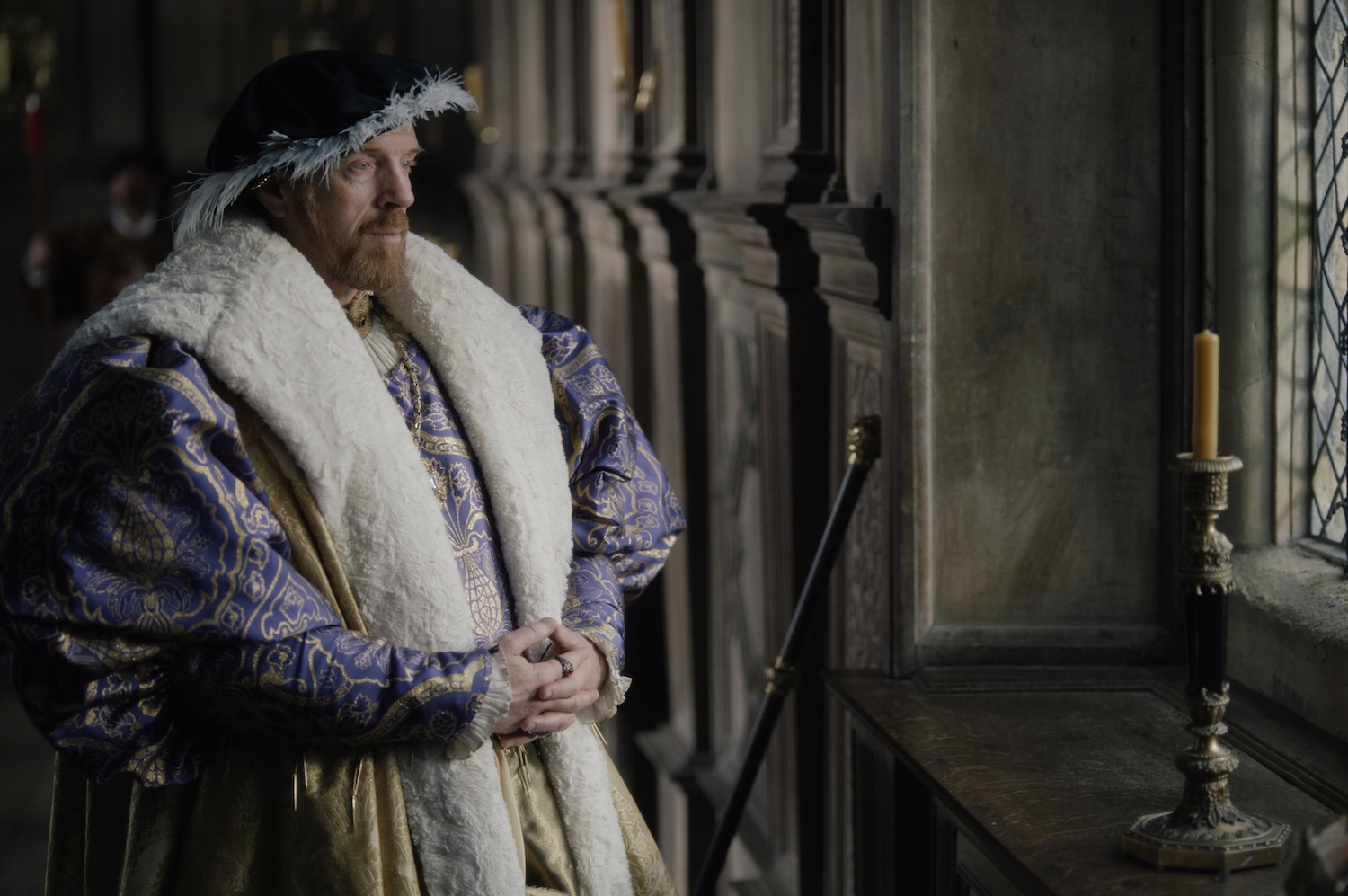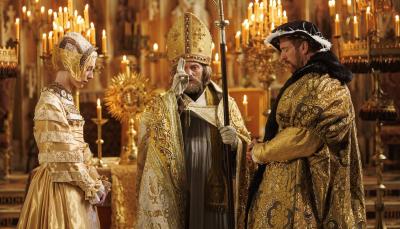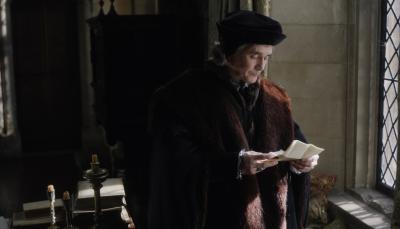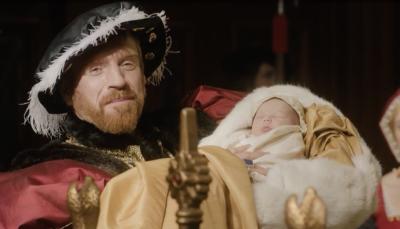Life & Death After Cromwell: What Happened After 'Wolf Hall'
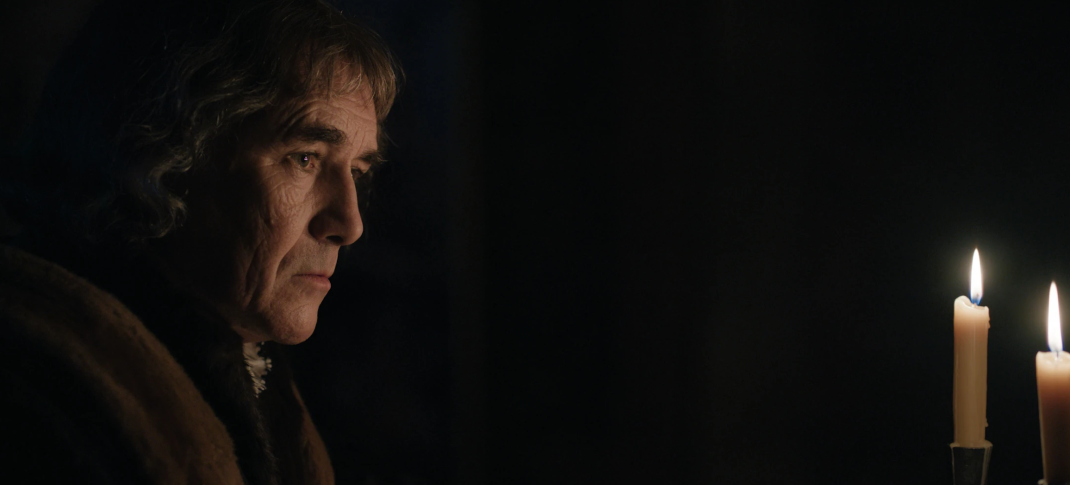
Mark Rylance as Thomas Cromwell in 'Wolf Hall The Mirror & The Light'
BBC
Wolf Hall: The Mirror & the Light's final two episodes, called "Mirror" and "Light," respectively, portray the shocking downfall of Thomas Cromwell (Mark Rylance) as precipitated by his selection of Anne of Cleves (Dana Herfurth) as Henry's fourth wife. But in reality, Cromwell had been dicing with disaster (aka the King’s whims) for years. Henry (Damian Lewis), in failing mental and physical health ever since his 1536 jousting accident, had become notoriously vindictive and unstable, and given to wild rages. In addition, he was grieving for Jane Seymour (Kate Phillips) and still desperate for more sons to ensure the succession.
Was Henry becoming afraid of Cromwell, now related to the throne with his son married to Bess, sister of Jane Seymour? Had Cromwell overstepped in his intensely emotional relationship with Henry’s daughter Mary (Lillit Lesser)? Above all, Cromwell was massively influential and rich, after years of shrewd deals and property purchases.
The shorthand version of the fall of Thomas Cromwell is that Henry VIII, humiliated by marriage to the German princess, took it out on his Lord Privy Seal. However, the chronology of events in 1540 clearly indicates the volatility of Cromwell’s relationship with his King.
- January 1: Henry VIII gets a sneak peek at his future bride, on her way to London, at Rochester, Kent. The meeting does not go well. Anne, unaware of the courtly love convention where Henry VIII in disguise is a handsome amorous stranger, reacts with repulsion when a smelly old man invades her space.
- January 6: Henry and Anne marry at Greenwich Palace. In one of the great understatements of history, the wedding night does not go well. Henry is forced to admit to impotence (all her fault, naturally).
- March 25: Cromwell is promoted to Lord Great Chamberlain and given the title Earl of Essex.
- June 10: Cromwell is charged with treason, heresy, felony, and corruption and imprisoned in the Tower. There is no trial. Is he guilty or very guilty? During his imprisonment, he works on the document that will promote the annulment of Henry and Anne’s wedding.
- July 9: The royal marriage is annulled, after accepting that Anne had entered into a previous contract of marriage (that same old lame excuse) and that her marriage to Henry was unconsummated.
- July 28: Cromwell is executed, and on the very same day, Henry marries volatile teenage Katherine Howard.
But according to historian Diarmaid MacCulloch, it was much more their foreign policy mishaps that led to both Wolsey’s and Cromwell’s downfalls:
For both Wolsey and Cromwell, the trigger for downfall was failure in foreign policy. Wolsey had found it impossible to persuade a pope intimidated by Charles V to annul the long-standing marriage of Charles’s aunt Catherine of Aragon to a selfish king of England. In Cromwell’s case, the problem was his understandable inability to deal with Henry VIII looking a gift horse from Cleves in the mouth .... The reasons are locked for ever in the mystery that is Henry VIII; no one else could see much wrong with her.
Cromwell was negotiating a “Two-Princess Deal” matching the Cleves marriage with a bid to marry the Princess Mary to Philip, Duke of Bavaria, a German prince with similar credentials to those of Cleves. The Duke arrived in England at the same time as Anne of Cleves and kissed Mary publicly in the garden of the abbot of Westminster. Nothing happened thereafter, and Philip disappears from history. The two royal marriages should have addressed the European balance of power, dominated by France and the Holy Roman Empire, and strengthened England's status, which was generally regarded by the continent as that of a small, backward island.
As for the rest of the players....
Anne of Cleeves
Anne of Cleves’s story is rare in that she had a happy ending. She agreed to a divorce from Henry and stayed in England, enjoying a lavish lifestyle, the owner of several properties including Hever Castle, birthplace of Anne Boleyn (Claire Foy); Richmond Palace, and the Anne of Cleves House (despite its name, she never actually lived there). In addition, she received gifts of clothes and jewels, an income of £500, and a household of officers, gentlemen, and ladies. She held a rank below that of the King and his daughters, with whom she was on excellent terms, even with Henry himself. She spent Christmas of 1541 at Hampton Court as the royal family’s guest.
For a woman with no prior knowledge of English culture or pastimes, she adapted remarkably well. Marillac, French Ambassador to the English court, wrote in 1540, quoted in Historic Royal Palaces: "Madame la Cleve has a more joyous countenance than ever. She wears a great variety of dresses, and passes all her time in sports and recreations."
Katherine Howard
As for the poor teenager who followed Anne of Cleves, she was not nearly as lucky or as savvy in handling her situation. Katherine Howard (Summer Richards) was all of 17 when she was married off to Henry by Norfolk (Timothy Spall, taking over the role from the late Bernard Hill), cementing his takeover as "the second most powerful man in England" now that Cromwell was out of the way. It was a disaster of epic proportions, one that multiple factions, including Cromwell, had well recognized long before it occurred. A sheltered, spoilt child, she was ill-prepared to have her previous lover, Francis Dereham, show up at the Palace demanding a position.
But Katherine's downfall started when she found herself sleeping with Thomas Culpepper, who history suggests was a sexual predator and a rapist, and also super hot. Whether or not she was seduced by Culpepper or the two had an instant love at first sight affair is a matter left to those who dramatize history. But once Dereham found out, it was merely a matter of time before it all came to light, and all three wound up on the headsman's block.
The Duke of Norfolk & Stephen Gardiner
Unlike his niece, the Duke of Norfolk, Thomas Howard, escaped the headsman's block, but only via a full stroke of luck. Katherine's beheading pushed him out of favor, and it wasn't long before he was plotting against the king and his new wife Katherine Parr, by teaming up with the Seymours (now also out of favor since their daughter had the temerity to die from childbirth) by marrying his widowed daughter, Mary, to Thomas Seymour. When the plan came to light, Henry stripped him of his dukedom, had him arrested, and thrown in the Tower in 1846, putting him on death row. Lucky for Norfolk, Henry VIII died less than a year later; however, he remained imprisoned until Mary freed him.
Stephen Gardiner likewise fell from favor along with Norfolk after the Katherine Howard marriage. However, he wasn't imprisoned in the tower until he was found to be the principal architect of framing Parr's childhood friend and confidante, Maud Lane, in an ill-advised attempt to convince Henry to behead yet another wife. He, too, got sent to the Tower only to be saved by Henry VIII's untimely death, and was not only freed by Mary I, but elevated to the position of her Lord Chancellor. He passed away in 1555, three years before she was deposed.
Rafe Sadler
Cromwell was devoted to his family, and there was surprisingly little in the way of retaliation from the King toward his household. Rather than this being a deliberate act of mercy by Henry, it was more likely that once Cromwell was destroyed, he was out of Henry’s mind, dropped like a hot potato, and created a scenario where it wasn’t his fault anyway. As Diarmaid MacCulloch has famously said, "The more you learn about Henry VIII, the less there is to like."
Rafe Sadler (Thomas Brodie-Sangster), already making an impression at Court as a gentleman of the Privy Chamber, was left in the dark about his uncle’s arrest. Wriothesley called him for some master secretary business minutes before the Privy Council Members started their attack on Cromwell. Sadler continued a brilliant career of over fifty years' service to the Tudors, despite a quick stay in the Tower after Cromwell’s arrest. Born in 1507, the son of the steward to the Marquess of Dorset, Rafe entered Cromwell’s service in 1521, where he received an excellent education. He married Ellen Mitchell, laundress to the Cromwell household, in 1535 and had seven children. Unfortunately, he later discovered that Ellen’s previous husband, considered dead, was very much alive, making Ralph’s children illegitimate and his marriage bigamous. (Given the vagueness of Tudor marriage law and practices, this is something that may have happened quite frequently.) Sadler used his influence to legitimize his marriage and children through an act of Parliament, a well-kept secret during his lifetime.
He was appointed Master of the Great Wardrobe in 1543 and arranged the King’s funeral, receiving a £200 bequest. He owned property in twenty-five counties in England and Wales, the annual income of which was £372 13s. 4d. by 1545–6. Sadler built a grand mansion on his estate at Standon, Hertfordshire. He was appointed one of the assistants to the sixteen executors of the regency council, who acted as guardians to Edward VI and were entrusted with governing the realm. His last royal position was as the guardian of the imprisoned Mary, Queen of Scots, under Elizabeth I. His country house, Bryck Place, in the (then) village of Hackney still stands, as does his lavish country mansion, Standon Lordship, Hertfordshire.
Gregory Cromwell
Gregory Cromwell (Charlie Rowe taking over for Tom Holland, who was too busy getting engaged to Zendaya to return) was Thomas Cromwell’s only son, born in 1520. He was sent away to school in Cambridge after his mother and two sisters died of the sweating sickness in 1529. His favorite activities were riding, hunting with the long bow, and hawking. He also enjoyed music, and played the lute and virginals (an early keyboard instrument). He married the widowed sister of Jane Seymour, Bess Oughtred (Maisie Richardson-Sellers), in 1537, making him brother-in-law to the King. The couple moved into Launde Abbey in Leicestershire in 1538 to escape the plague.
However, Gregory became involved in a serious and scandalous liaison for which he was ordered to perform a public confession and penance of distributing loaves one Sunday after Mass in Chichester Cathedral. Gregory refused to comply, and the young couple were rapidly relocated to Leeds Castle in Kent, where he became one of the two MPs for the county. He was made Baron Cromwell of Oakham in 1540 (not to be confused with his father’s title of the same year, Lord Cromwell, Baron of Wimbledon and Earl of Essex). He died in 1551 in another outbreak of sweating sickness.
Richard Cromwell
Richard Cromwell (Joss Porter) was born Richard Williams in Wales in 1510 and was the nephew of Thomas Cromwell, whose last name he adopted. After working for Stephen Gardner (Alex Jennings, taking over from the booked and busy Mark Gatiss), he joined his uncle’s household at Austin Friars and was introduced at court. He was active with his uncle in suppressing the Pilgrimage of Grace and in the dissolution of the monasteries. In 1540, he distinguished himself at an international jousting tournament at Westminster, where he defeated a pair of French opponents on the second day. Henry knighted him on the spot, exclaiming “Formerly thou wast my Dick, but hereafter shalt be my diamond.”
He then dropped his diamond ring as a gift for Richard, and the family crest, which was created, was inspired by this incident, featuring a lion rampant holding a ring in its paw. Further rewards included money and property, which added to his considerable land ownership in Hertfordshire, making him one of the wealthiest men in England. He died after fighting in the wars against the Netherlands and France. His son and heir was seven-year-old Henry, who became the grandfather of another reviled member of the Cromwell family, Oliver Cromwell, whose leadership of the Parliamentary faction led to civil war, the execution of King Charles I in 1649, and a ten-year interregnum in which England was a commonwealth. As mentioned earlier, his most notable and surprising living descendant is actor Danny Dyer.
Henry VIII
One could argue that Henry VIII’s fate is well known, as is that of his daughters, Mary and Elizabeth. Henry’s fifth marriage ended quickly, and his final wife was Katherine Parr (who, despite being around as Lady Latimer and having a decent-sized role in the novels, does not appear in this adaptation). Henry died not long after marrying her, but they were married long enough that he decided she was a terrible mistake and threw her in the Tower. Like Norfolk and Gardiner, she was lucky he died before the headsman could get around to her.
She received £7,000 per year to support herself as promised, and Edward VII allowed her to return home to Chelsea Manor, where she eventually married the love of her life, Thomas Seymour. She died in childbirth a few years later, and Seymour wound up being executed for treason under Edward VII, partly for marrying Katherine in secret, but also as collateral damage in a plot that was aimed at getting Elizabeth tried and convicted for the same. Instead, she testified that Seymour was a sexual predator, got off scot free, and was beheaded.
Edward VII did not rule long; Mary I succeeded him in 1553 and ruled for five years before Elizabeth became England’s first great queen, seeing through her mother’s ambitions.
However, Marillac also reports that Henry, only months after Cromwell’s execution, was ranting at his councillors that, “... upon the pretexts of trivial faults that [Cromwell] had committed, they had laid several false accusations on him, by which [the king] been made to put to death the most faithful servant he ever had.” Perhaps that small revenge of knowing he regretted his actions is enough, especially since in the end, Henry VIII lost and Anne Boleyn won.
Both Wolf Hall and Wolf Hall: The Mirror & the Light are now streaming with PBS Passport on the PBS app and via the PBS Masterpiece Prime Video Channel.

